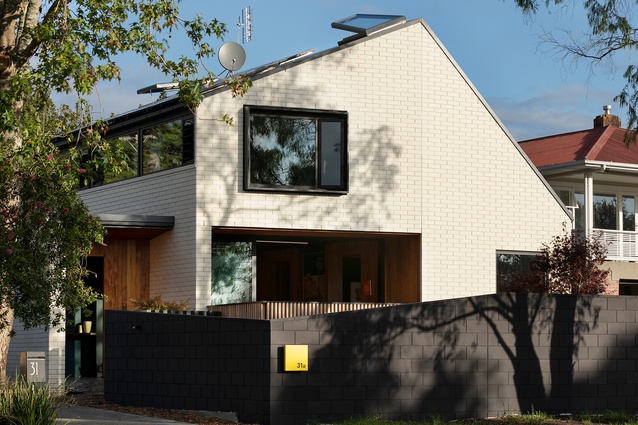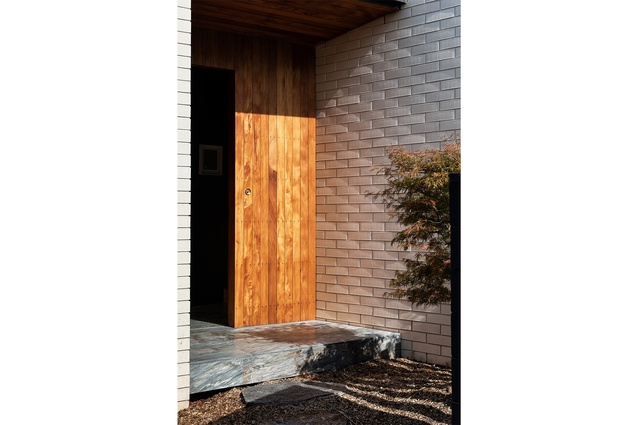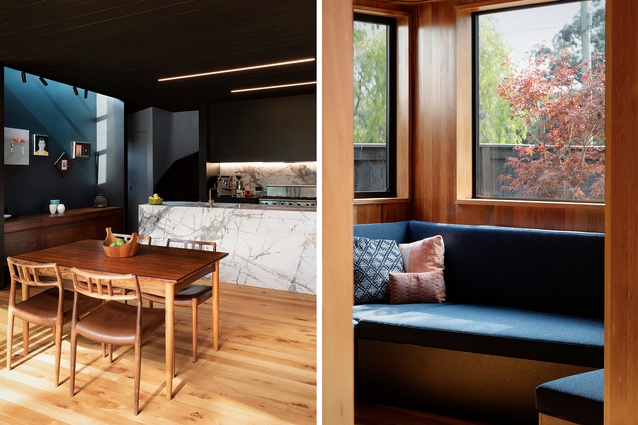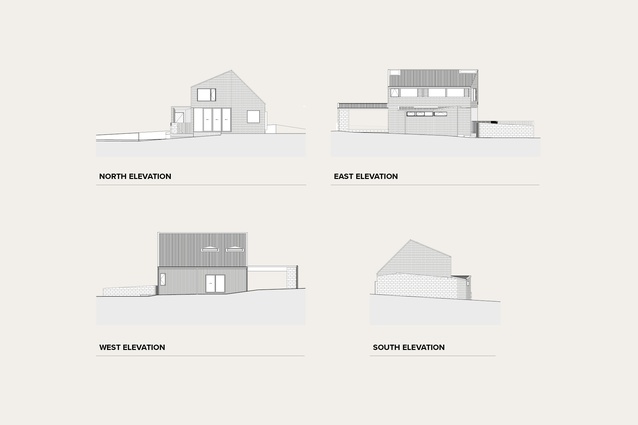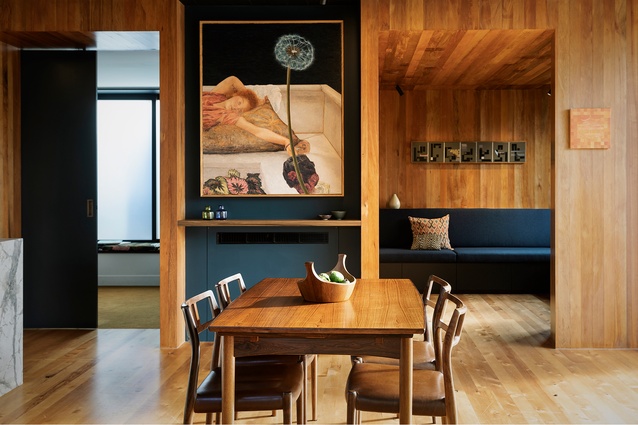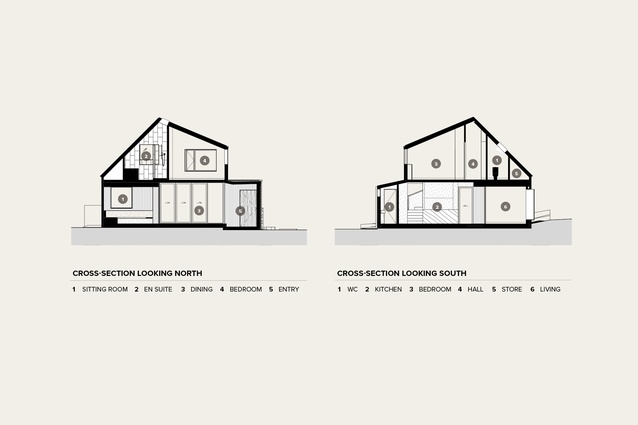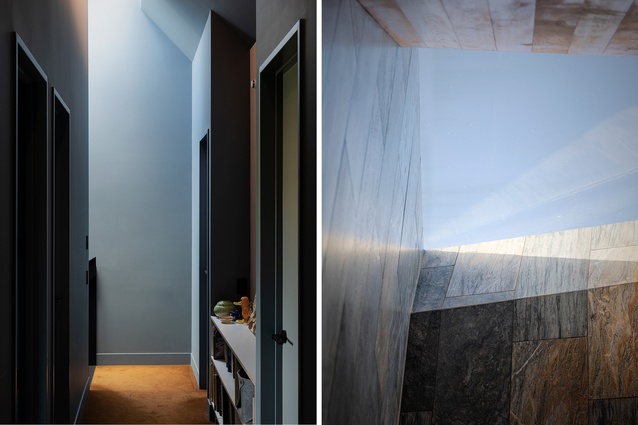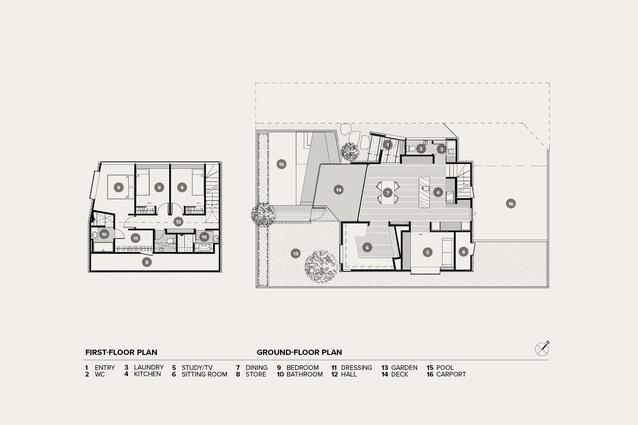Magical constraint
Richard Naish, architect and founder of RTA Studio contemplates what makes a good house as he visits studio/ LWA’s award-winning Our House in Westmere, Auckland.
As architects, we sure know that making a good house is not easy. And, it doesn’t always follow that starting with a great plan will necessarily generate great space and form, and make a delightful sequence of spaces to live in. Making a good house requires the addition of something else that’s hard to define – a sort of architectural magic. The stuff that turns bricks and mortar into a ‘work of architecture’ rather than merely a house. The word magic is not intended to undermine the intellectual workload required to make a good house. It is not to say that masterful architecture results come from a kind of sorcery, from abilities beyond our mortal worlds. It is just to say that the power of a good house is far greater than the sum of its constituent parts and, somehow, that seems magical. The magic of a house comes from balancing the tangible with the intangible, the mass with the void, the light with the dark, the fact with the fiction. Every house tells a story.
If architects are anything like me, they crave something to react to, respond to, shelter from, insulate from, open up to, shut down from, nurture and protect: a brief, a budget, a site, a climate, a topography, etc. We call these constraints. Would it be easier to design a house without these constraints?
Imagine a greenfield building site with no neighbours. Flat, with no views. All the services ready and waiting at the driveway boundary. A wonderful climate, with no wind, mild temperatures all year round and moderate rainfall. Then imagine an unlimited budget and, finally, a client who says they have no brief. Do what you like. An architect’s dream? More like their worst nightmare.
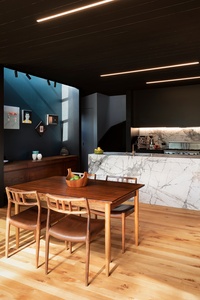
In many cases, when we examine the houses that we consider to be good houses, we find that, the more constraints a house project has, the better the house. Constraints can constrain or, with a bit of magic, they can be persuaded to become opportunities. Constraints often impose a discipline and rigour onto a programme that might otherwise, if left unchecked, allow a house to bulge and sprawl, as the temptation of opportunity seeks to take the architect on a journey of self-indulgence.
That cannot be said for Lisa Webb’s Our House, a reinterpretation of a family bungalow on a site that is a quarter of the size of the ‘old quarter acre’. This infill townhouse on a front lawn on the wrong side of the street in Westmere, Auckland, is an exemplar of a small-footprint house that elevates the experience of family suburban living.
The many constraints of this project have become the project’s magic. The 260m2 (net) site is saddled with covenants imposed by the subdivider, which constrain height and protect views – over and above the usual underlying district plan rules. Add buried services, tightly packed neighbours and required onsite car parks with manoeuvring, not to mention budgets, time constraints and client demands, and you have a challenge greater than most.
This site is on the wrong side of the street but only when you are looking for sun in the backyard. Our House occupies the front yard subdivided off its neighbour’s property, which was large enough to have both back and front yards. Webb has clustered all the indoor and outdoor living spaces and master bedroom to the northern half of the house, the front yard. This not only gives the house the nourishment of the sun but also the nourishment of community engagement with the street and all its ensuing activity. She has then inserted a variety of carefully positioned roof lights and high-level windows to invite, wash and bounce light across the surfaces of carefully crafted spaces.
The house is a good neighbour. It uses white brick and a well-proportioned offset gable roof line, together with good window placement; this allows it to fit in and ‘get along’ with its predominantly bungalow neighbours, but the street is peppered with more-recent additions like itself. So, it has a contextual relationship with both the past and recent histories of the street. Its presentation to the street is neither surprising nor ubiquitous in form. This unassuming presence gives way, by intended contrast, to a much more anecdotal and powerful interior. It feels right that this house has a certain public and confident face that nurtures an idiosyncratic and crafted interior. This house is a series of dualities, even contradictions – polite but cheeky, public but personal, light but dark. This highly autobiographical project has extracted a rare dialogue between architect and client family that has allowed a loosening of the rules, permitting a density not often experienced in a small infill townhouse.
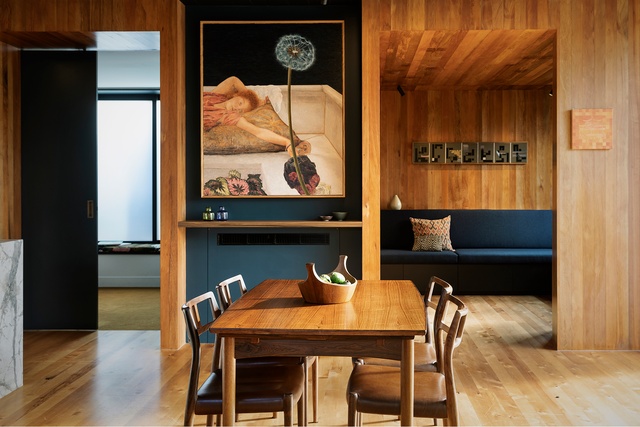
The plan is an exercise in economy. Every cubic centimetre of space has been extracted from the available envelope of the site and reassembled in a sequence of spaces and volumes that provides delight by considered composition of light, shade, scale, volume and surface.
The entrance to the house is only just big enough. A small doorstep loggia is forgiven by a beautiful antique brass doorbell set into natural timber cladding and a bronze door handle. Flashbacks to the doorstep of Zumthor’s Saint Benedict Chapel in Switzerland come to me as Webb opens the door to her home. It is immediately evident there is a lot more to come. We transition into a small, sun-washed ante-room entry lined in timber before taking one step up into the largest space in the house, the kitchen-dining space. This space gives way to two further living nooks and the outdoor deck to the north. The first of these living nooks is a den with a TV, a bookshelf and built-in seating. With no door intended, it is almost a separate room but very much connected to the main room, whereas the second nook provides a closable space for kids to play or adults to work from home. Both these rooms are framed by portals of natural timber linings that indicate threshold and definition of a change in activity yet remain connected as a family of closely related rooms. The kitchen occupies its central space, almost as if it were one of the members of the family: a well-loved and used series of functional surfaces and cabinets, obviously briefed and designed for a family that clearly places cooking and eating at the centre of its home life.
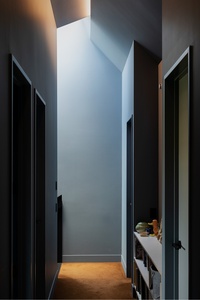
A staircase winds up behind the kitchen, flooded by skylights so the experience is uplifting, and natural light is also introduced to the bathrooms and hallway, cleverly mitigating the lack of exterior windows imposed by further subdivision covenants. There are two economical children’s bedrooms that we pass before reaching the northern main bedroom. This room captures the long views beyond the suburb and the east and west light, creating a sense of separation and oasis from the rest of the small house. This part of the house makes great use of the folded roof forms, again utilising all spatial opportunities to make great bathrooms and bedrooms. As executed downstairs, the use of colour, tiles, timber and fittings disguises smallness and elevates spatial experience.
While the constraints of this house have required the architect to take extraordinary care to assemble the plan, the delight of this house comes from both the project’s challenges and the deeply personal autobiographical curation of the interior. Plus, a deft hand has sculpted the space and placed the daylight and assembled the surfaces, materials and colours, all overlayed by the architect’s own paintings, furniture and lifetime of collected treasures. This gives the house an intimacy and personalisation that manifests itself in the confluence of plan, form, function, material, light and shade. This is a really good house that has been crafted from its constraints, negotiated with its inhabitants and mixed up with just a touch of architectural magic. This house just simply wouldn’t exist anywhere else other than where it is, with its people.

